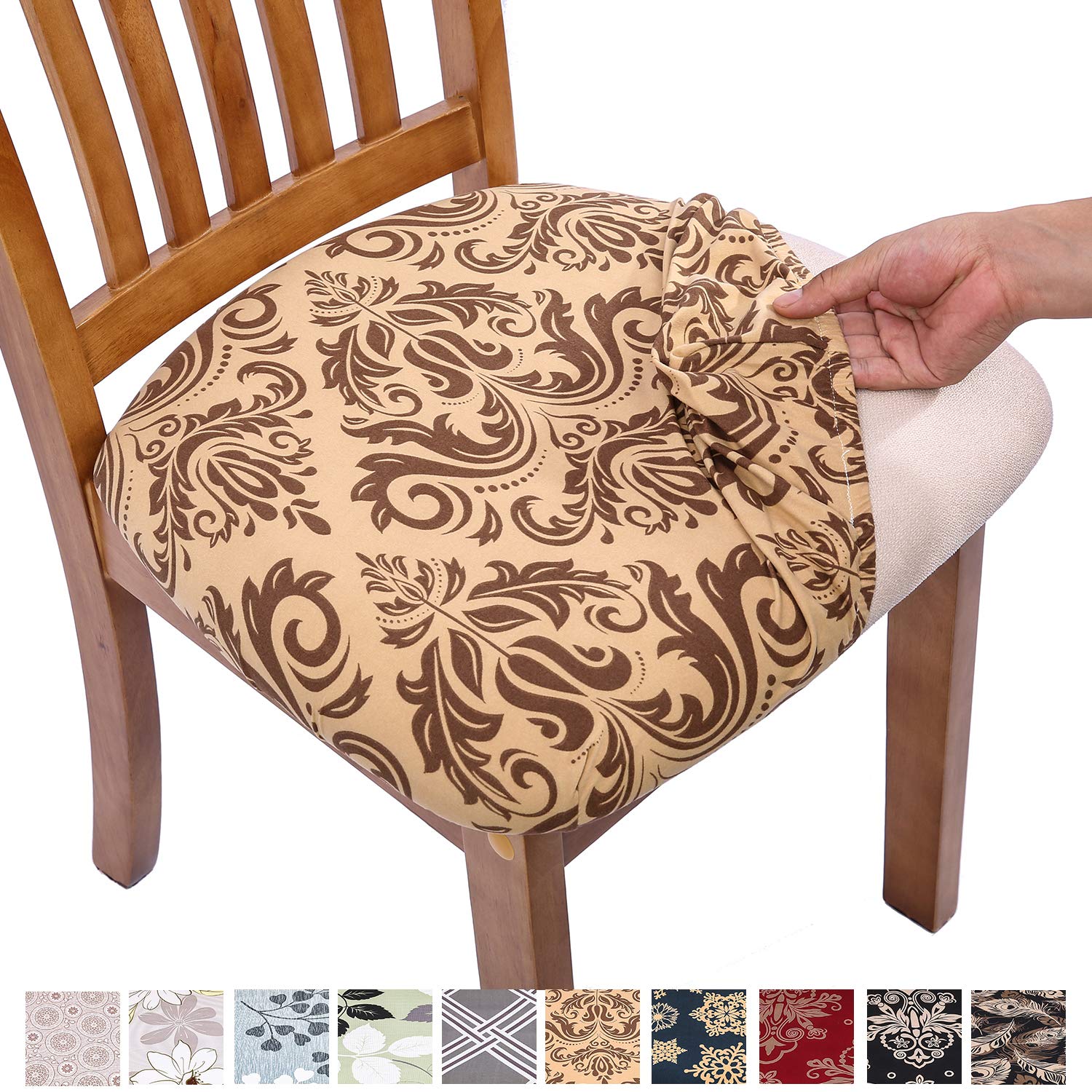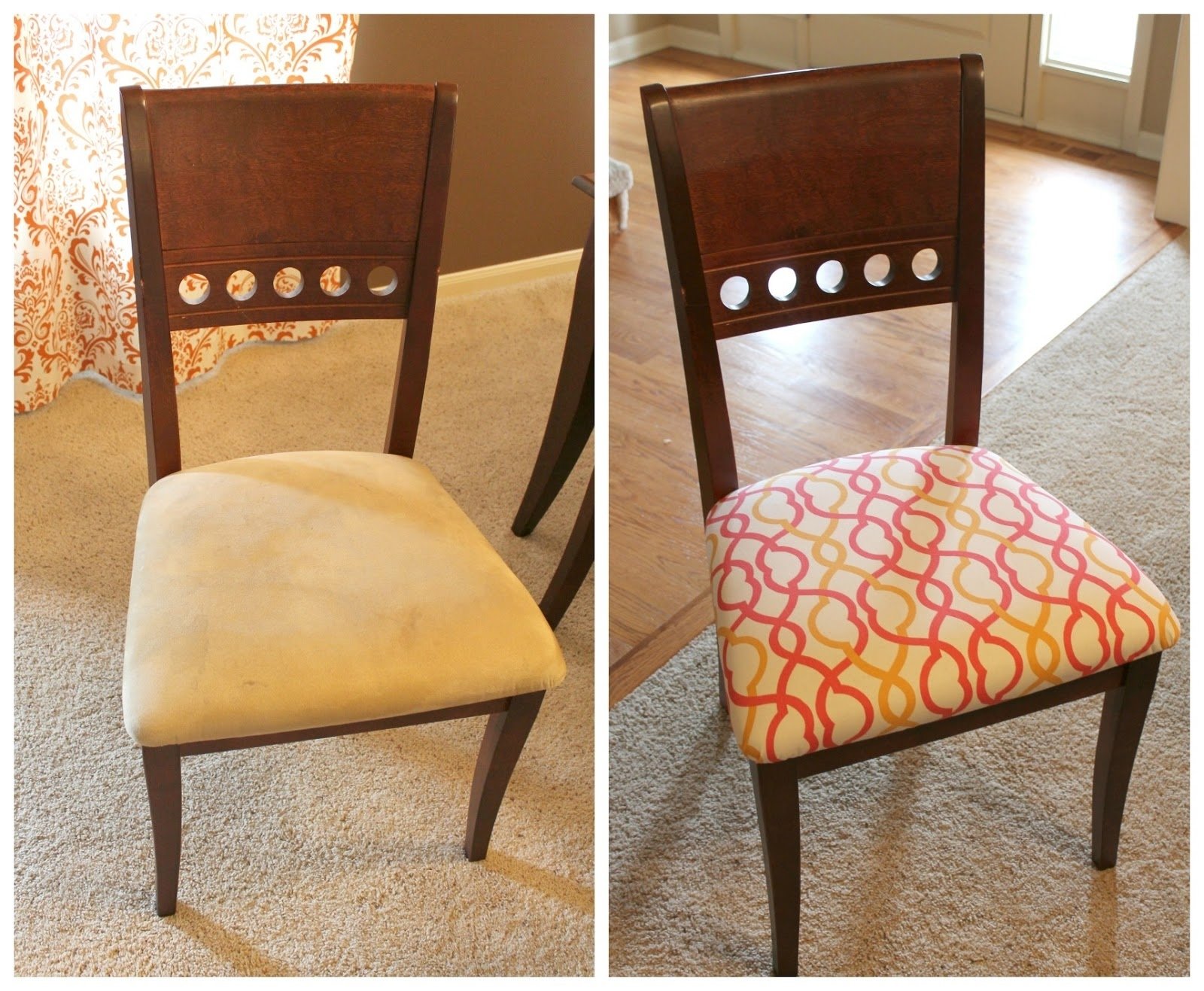Materials and Tools: Upholstering A Dining Chair Seat

Upholstering a dining chair seat requires a combination of materials and tools to ensure a successful and durable outcome. The materials chosen will impact the final look, feel, and longevity of the chair, while the tools provide the necessary means for executing the upholstery process.
Fabric Selection
The choice of fabric plays a crucial role in the overall aesthetic and functionality of the dining chair seat. Different fabrics offer varying levels of durability, comfort, and aesthetic appeal, making it essential to consider the intended use and desired look.
- Cotton: A natural fiber known for its breathability and softness. It is relatively affordable and easy to clean, making it suitable for everyday use. However, cotton can wrinkle easily and may not be as durable as other options.
- Linen: Another natural fiber known for its durability and resistance to fading. Linen is also breathable and comfortable, making it a good choice for warmer climates. However, it can be prone to wrinkles and may be more expensive than cotton.
- Velvet: A luxurious fabric known for its soft texture and elegant appearance. Velvet is durable and stain-resistant, making it suitable for high-traffic areas. However, it can be more difficult to clean and may be more expensive than other options.
- Leather: A durable and elegant material known for its luxurious feel and timeless appeal. Leather is resistant to wear and tear and can be easily cleaned. However, it can be more expensive than other options and may require regular conditioning to maintain its quality.
- Microfiber: A synthetic fabric known for its durability and stain resistance. Microfiber is also soft and comfortable, making it a popular choice for upholstery. It is relatively affordable and easy to clean, making it a good option for families with children or pets.
Foam Selection, Upholstering a dining chair seat
The foam used for the dining chair seat plays a crucial role in providing comfort and support. Choosing the right type and density of foam is essential for creating a comfortable and durable seating experience.
- Density: Foam density is measured in pounds per cubic foot (PCF). Higher density foam is generally more durable and supportive, but it can also be less comfortable. Lower density foam is typically softer and more comfortable, but it may not be as durable.
- Type: There are several types of foam used for upholstery, each with its own unique properties. High-resilience (HR) foam is known for its durability and resilience, making it a good choice for high-traffic areas. Memory foam is known for its ability to conform to the shape of the body, providing excellent comfort and support. Polyurethane foam is a versatile and affordable option that is available in a wide range of densities and types.
Preparation and Measurements

Preparing the dining chair seat for reupholstery involves removing the old fabric, foam, and any existing staples. Accurately measuring the dimensions of the chair seat is crucial for ensuring a proper fit for the new upholstery. Cutting the new fabric, foam, and batting to the correct size, with sufficient allowance for pleats and tucking, is also essential for a professional-looking finish.
Removing the Old Upholstery
Removing the old upholstery is the first step in reupholstering a dining chair seat. This involves carefully detaching the fabric, foam, and any existing staples from the chair seat.
- Start by removing any loose fabric or staples from the chair seat.
- Use a staple remover or pliers to carefully remove the staples that hold the fabric and foam in place. Work slowly and carefully to avoid damaging the chair frame.
- Once the staples are removed, gently pull the fabric and foam away from the chair seat. Be careful not to tear the fabric.
- Inspect the chair seat for any loose or damaged parts, such as the webbing or springs. Repair or replace these parts before proceeding with the reupholstery process.
Measuring the Chair Seat
Accurate measurements are essential for ensuring a proper fit for the new upholstery. This involves measuring the length, width, and depth of the chair seat.
- Use a measuring tape to measure the length, width, and depth of the chair seat. Ensure that the measurements are taken from the outside edges of the chair seat.
- Record the measurements carefully, including any curves or angles in the chair seat.
- For a comfortable fit, consider adding a small allowance to the measurements for the new fabric and foam.
Cutting the New Upholstery Materials
Once you have the measurements, you can cut the new fabric, foam, and batting to the correct size.
- Lay out the new fabric, foam, and batting on a flat surface. Use a sharp utility knife or fabric shears to cut the materials to the measured dimensions.
- When cutting the fabric, ensure that you leave a sufficient allowance for pleats and tucking. The allowance will vary depending on the type of fabric and the style of the chair seat. Generally, a 2-3 inch allowance is sufficient for most chair seats.
- If you are using a patterned fabric, ensure that the pattern is aligned correctly on the chair seat.
Upholstery Process

The upholstery process involves attaching new foam, batting, and fabric to the chair seat frame, creating a comfortable and aesthetically pleasing surface. This section details the steps involved in each stage of the upholstery process.
Attaching Foam
Attaching the new foam to the chair seat frame is crucial for providing the necessary cushioning and support. The foam should be cut to the exact dimensions of the chair seat, ensuring a snug fit.
- Secure the Foam: Use a staple gun to attach the foam to the chair seat frame. Ensure the staples are placed evenly and securely, preventing the foam from shifting or detaching over time. Alternatively, use a strong adhesive to bond the foam to the frame, ensuring a secure and long-lasting attachment.
- Proper Alignment: Carefully align the foam with the chair seat frame, ensuring it is centered and level. This ensures even distribution of weight and a comfortable seating experience.
Attaching Batting
Batting provides a smooth and even surface for the fabric, preventing wrinkles and creating a more polished look. Batting is typically made from cotton or polyester and comes in various thicknesses, depending on the desired level of padding.
- Cut to Size: Cut the batting to the same dimensions as the foam, ensuring it covers the entire surface.
- Securing the Batting: Attach the batting to the foam using a staple gun. Place staples around the perimeter of the batting, ensuring it is taut and smooth. Alternatively, use an upholstery tack strip, which is a strip of fabric with tacks attached, to secure the batting to the foam.
Attaching Fabric
Attaching the new fabric to the chair seat is the final step in the upholstery process. The fabric should be carefully measured and cut to ensure a tight and wrinkle-free fit.
- Fabric Preparation: Cut the fabric to the desired dimensions, allowing for extra fabric around the edges for stapling.
- Securing the Fabric: Use a staple gun to attach the fabric to the chair seat frame, starting from the center and working towards the edges. Ensure the fabric is taut and smooth, avoiding wrinkles or creases.
- Upholstery Tacks: Use upholstery tacks to secure the fabric to the chair seat frame, providing a decorative and secure finish. Tacks are typically made from metal or plastic and come in various colors and styles.
Creating Upholstery Pleats and Tucks
Upholstery pleats and tucks add a decorative element to the chair seat, enhancing its aesthetic appeal. They also serve functional purposes, such as adding extra padding or shaping the fabric to conform to the chair’s contours.
- Box Pleats: Box pleats are formed by folding the fabric back on itself, creating a rectangular shape. They are commonly used on chair seats and backs, adding a classic and elegant touch.
- Knife Pleats: Knife pleats are created by folding the fabric in a series of sharp, narrow pleats. They are often used on chair backs and cushions, providing a more structured and formal look.
- French Pleats: French pleats are a combination of box and knife pleats, creating a more intricate and sophisticated look. They are often used on decorative cushions and throws.
- Tucks: Tucks are created by folding the fabric back on itself and securing it with stitching or stapling. They are commonly used on chair seats and cushions, adding a subtle and elegant touch.
Reupholstering a dining chair seat can be a fun DIY project, but sometimes you just want a quick fix. If you’re dealing with a round-back dining chair, check out chair covers for round back dining chairs – they’re a super easy way to change up the look of your chairs without the hassle of upholstery.
Of course, if you’re up for a challenge, reupholstering can be a rewarding way to personalize your dining space.
Reupholstering a dining chair seat can be a fun DIY project, especially if you want to give your dining room a refresh. If you’re going for a glam look, consider adding some gold dining chair cushions. They’ll instantly elevate the space and make your chairs feel luxurious.
Just make sure you choose a fabric that’s durable enough to handle everyday wear and tear, and you’ll be set for years to come.
